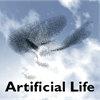研究基于熟悉度的导航的局限性
IF 1.5
4区 计算机科学
Q4 COMPUTER SCIENCE, ARTIFICIAL INTELLIGENCE
引用次数: 0
摘要
受昆虫启发的导航策略具有在动力受限的情况下开启机器人导航的潜力,因为它们可以在有限的计算资源下有效发挥作用。其中一种策略是基于熟悉度的导航,它利用用Infomax学习规则训练的单层神经网络,成功地沿着长达60米的路线为机器人导航。鉴于有效编码路线的网络规模较小,我们在此研究了这种方法的局限性,挑战它导航更长的路线,研究性能、视图获取率和维度、网络规模以及对噪声的鲁棒性之间的关系。我们的目标既是确定该方法有效运行的参数,也是探索其失败的概况,以便为昆虫导航理论提供信息,并改进机器人的部署。我们的研究表明,与之前的尝试相比,我们可以在更长的路线上有效记忆熟悉的视图,但当输入视图的维度减少时,记忆的长度也会减少。我们还证明,理想的视图获取率必须随着路线长度的增加而提高,才能获得一致的性能。我们进一步证明,通过减小网络规模(这是适用于小型、低功率机器人的一个重要考虑因素),可以在实现同等性能的情况下节省计算量和内存,并研究了内存失效的概况,证明随着路线长度的增加,整个路线的混乱程度也会增加。在对之前工作的扩展中,我们还研究了网络权重在训练过程中的形式,以及基于视觉熟悉度的导航最依赖的图像区域。此外,我们还研究了基于熟悉度的导航对噪声引起的视图变化的稳健性。本文章由计算机程序翻译,如有差异,请以英文原文为准。
Investigating the Limits of Familiarity-Based Navigation
Insect-inspired navigation strategies have the potential to unlock robotic navigation in power-constrained scenarios, as they can function effectively with limited computational resources. One such strategy, familiarity-based navigation, has successfully navigated a robot along routes of up to 60 m using a single-layer neural network trained with an Infomax learning rule. Given the small size of the network that effectively encodes the route, here we investigate the limits of this method, challenging it to navigate longer routes, investigating the relationship between performance, view acquisition rate and dimension, network size, and robustness to noise. Our goal is both to determine the parameters at which this method operates effectively and to explore the profile with which it fails, both to inform theories of insect navigation and to improve robotic deployments. We show that effective memorization of familiar views is possible for longer routes than previously attempted, but that this length decreases for reduced input view dimensions. We also show that the ideal view acquisition rate must be increased with route length for consistent performance. We further demonstrate that computational and memory savings may be made with equivalent performance by reducing the network size—an important consideration for applicability to small, lower-power robots—and investigate the profile of memory failure, demonstrating increased confusion across the route as it extends in length. In this extension to previous work, we also investigate the form taken by the network weights as training extends and the areas of the image on which visual familiarity–based navigation most relies. Additionally, we investigate the robustness of familiarity-based navigation to view variation caused by noise.
求助全文
通过发布文献求助,成功后即可免费获取论文全文。
去求助
来源期刊

Artificial Life
工程技术-计算机:理论方法
CiteScore
4.70
自引率
7.70%
发文量
38
审稿时长
>12 weeks
期刊介绍:
Artificial Life, launched in the fall of 1993, has become the unifying forum for the exchange of scientific information on the study of artificial systems that exhibit the behavioral characteristics of natural living systems, through the synthesis or simulation using computational (software), robotic (hardware), and/or physicochemical (wetware) means. Each issue features cutting-edge research on artificial life that advances the state-of-the-art of our knowledge about various aspects of living systems such as:
Artificial chemistry and the origins of life
Self-assembly, growth, and development
Self-replication and self-repair
Systems and synthetic biology
Perception, cognition, and behavior
Embodiment and enactivism
Collective behaviors of swarms
Evolutionary and ecological dynamics
Open-endedness and creativity
Social organization and cultural evolution
Societal and technological implications
Philosophy and aesthetics
Applications to biology, medicine, business, education, or entertainment.
 求助内容:
求助内容: 应助结果提醒方式:
应助结果提醒方式:


